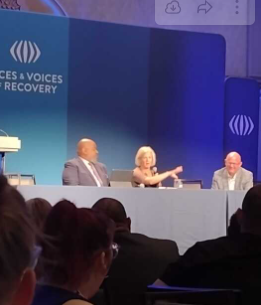Will heightened focus on fentanyl lead to short-sighted solutions?
NOTE: Sober Linings Playbook is a personal website. Any views or opinions expressed herein belong solely to the website owner and do not represent those of individuals or organizations the owner may be associated with in a professional or personal capacity, unless explicitly stated.
July 5, 2023
Concerns about fentanyl are clearly warranted. According to the CDC, about two thirds of record numbers of overdose deaths in the U.S. in the past few years have been related to fentanyl or other synthetic opioids. But risks associated with drug use and the drug supply come in waves and change over time. When a crisis creates opportunities for change, shouldn’t we be thinking about what’s next, and not just about what’s now?
I raise this question because of the significant volume state and federal legislative proposals aimed specifically at fentanyl at a time when experts are sounding the alarm about xylazine in the drug supply changing the nature of the risks faced by people who use drugs.
In my home state of California, more than 40 legislative proposals that name fentanyl specifically were introduced this year (a keyword search for “xylazine” yields just two results). Most of the punitive sentencing bills aren’t likely moving forward but here are a few still under consideration:
SB 10 (Cortese-D) — Would establish a State Working Group on Fentanyl Education in Schools, for the purpose of promoting public education, awareness, and prevention of fentanyl overdoses, with the outreach aimed at staff and pupils in schools.
SB 19 (Seyarto-R) — Would establish the Anti-Fentanyl Abuse Task Force to be chaired by the Attorney General. The task force would begin meeting in 2024 and would report its findings and recommendations to the AG, the Governor and the Legislature by July 1, 2025.
AB-33 (Bains-D) — Would establish the Fentanyl Addiction and Overdose Prevention Task Force to be cochaired by the Attorney General and the Surgeon General. The task force would beginning meeting in early 2024, and would submit a report with findings and recommendations to the Attorney General, the Governor, and the Legislature by July 1, 2025.
I can’t argue against the need to study how we might better respond to the fentanyl crisis, but if we’re going to spend time and resources on education and prevention in the schools, and to examine the public health and public safety readiness to handle the current overdose crisis, why not broaden the focus beyond fentanyl to all addictive and dangerous substances? Wouldn’t efforts to modernize, improve and expand the addiction treatment and recovery infrastructure and workforce serve us better in the long run?
What really got me thinking about this was a presentation on xylazine I saw last month at the Faces and Voices of Recovery Leadership Summit in D.C. At the conference, I attended a session led by representatives of Savage Sisters, a harm reduction organization in the Philadelphia area. The presenters explained that as xylazine has increasingly entered the drug supply, harm reduction responses have had to shift to wound care and rescue breathing as essential lifesaving tools. Narcan (nalaxone) is not sufficient. As a vasoconstrictor, xylazine prevents wounds from healing properly and can lead to serious infections and amputations. Xylazine is a sedative that causes breathing to slow down, but because it’s not an opioid, naloxone doesn’t reverse the effects.
According to a piece in the New York Times reported earlier this year (Tranq Dope: Animal Sedative Mixed With Fentanyl Brings Fresh Horror to U.S. Drug Zones, New York Times, Jan 7, 2023), more than 90 percent of Philadelphia’s lab-tested dope samples were positive for xylazine. A study published in June 2022 found that xylazine was detected in the drug supply in 36 states and the District of Columbia.
Given the increasing risks posed by xylazine, I wonder whether programs and policies crafted narrowly to address fentanyl will leave us less nimble to address xylazine and other future threats in the drug supply.
-Grant
Pictures from the Faces and Voices of Recovery Leadership Summit, June 2023
Beth Macy (Dopesick, Raising Lazarus) and Dr. Stephen Loyd (inspiration for the Michael Keaton character on the Hulu Dopesick series) talked about the Sacklers, fentanyl, the opioid crisis and improving access to harm reduction services and medication for opioid use disorder.
Me with Carolina Ayala, founder/executive director of a recovery community organization called The Happier Life Project, during Capitol Hill visits with other Faces and Voices conference participants.




